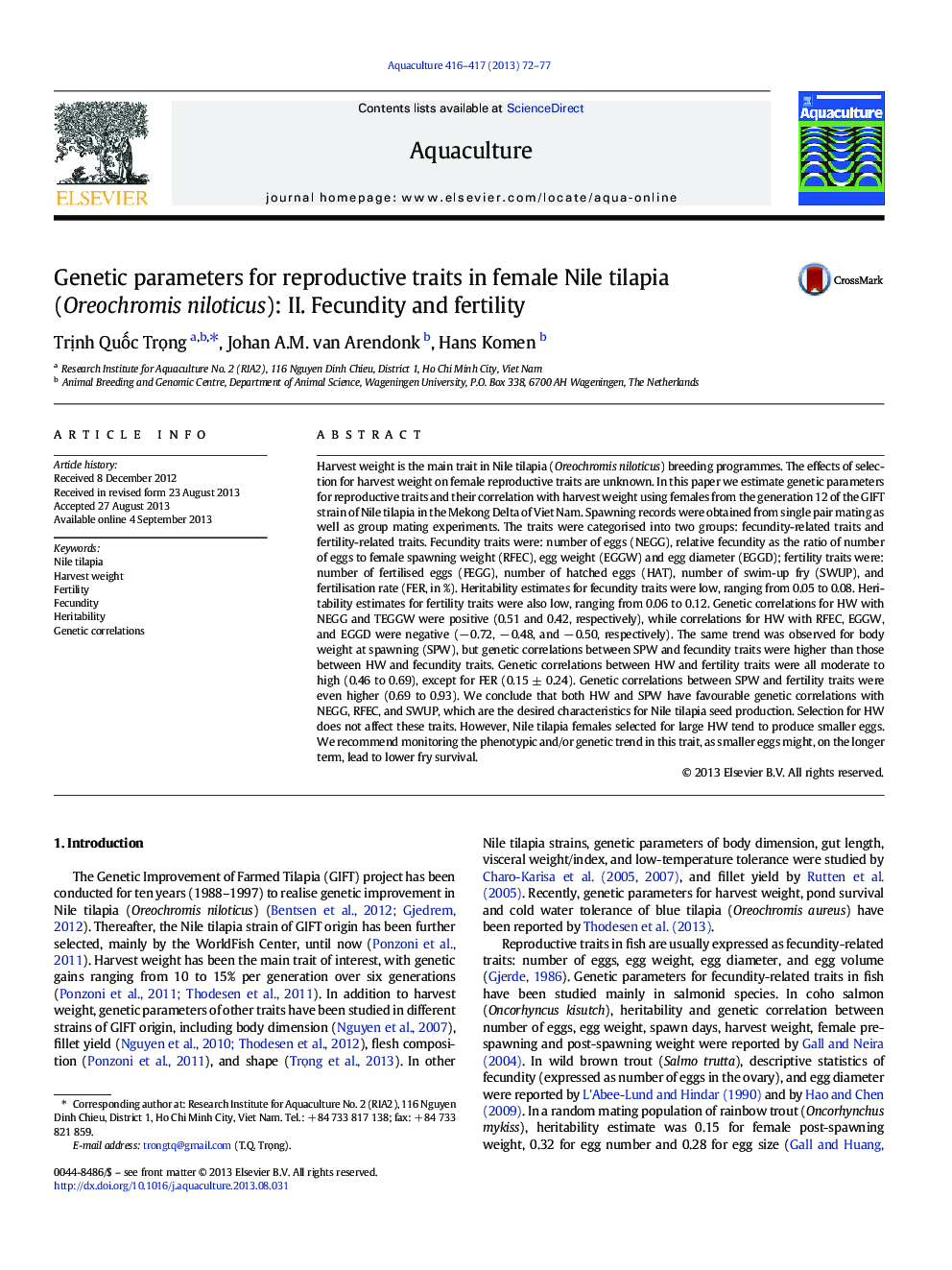| کد مقاله | کد نشریه | سال انتشار | مقاله انگلیسی | نسخه تمام متن |
|---|---|---|---|---|
| 2422025 | 1552865 | 2013 | 6 صفحه PDF | دانلود رایگان |

• First report of heritability estimates for reproductive traits in GIFT.
• Moderate heritability for number of eggs, relative fecundity and egg size.
• Key reproductive traits have favourable genetic correlation with harvest weight.
• Females selected for high harvest weight will produce smaller eggs.
Harvest weight is the main trait in Nile tilapia (Oreochromis niloticus) breeding programmes. The effects of selection for harvest weight on female reproductive traits are unknown. In this paper we estimate genetic parameters for reproductive traits and their correlation with harvest weight using females from the generation 12 of the GIFT strain of Nile tilapia in the Mekong Delta of Viet Nam. Spawning records were obtained from single pair mating as well as group mating experiments. The traits were categorised into two groups: fecundity-related traits and fertility-related traits. Fecundity traits were: number of eggs (NEGG), relative fecundity as the ratio of number of eggs to female spawning weight (RFEC), egg weight (EGGW) and egg diameter (EGGD); fertility traits were: number of fertilised eggs (FEGG), number of hatched eggs (HAT), number of swim-up fry (SWUP), and fertilisation rate (FER, in %). Heritability estimates for fecundity traits were low, ranging from 0.05 to 0.08. Heritability estimates for fertility traits were also low, ranging from 0.06 to 0.12. Genetic correlations for HW with NEGG and TEGGW were positive (0.51 and 0.42, respectively), while correlations for HW with RFEC, EGGW, and EGGD were negative (− 0.72, − 0.48, and − 0.50, respectively). The same trend was observed for body weight at spawning (SPW), but genetic correlations between SPW and fecundity traits were higher than those between HW and fecundity traits. Genetic correlations between HW and fertility traits were all moderate to high (0.46 to 0.69), except for FER (0.15 ± 0.24). Genetic correlations between SPW and fertility traits were even higher (0.69 to 0.93). We conclude that both HW and SPW have favourable genetic correlations with NEGG, RFEC, and SWUP, which are the desired characteristics for Nile tilapia seed production. Selection for HW does not affect these traits. However, Nile tilapia females selected for large HW tend to produce smaller eggs. We recommend monitoring the phenotypic and/or genetic trend in this trait, as smaller eggs might, on the longer term, lead to lower fry survival.
Journal: Aquaculture - Volumes 416–417, 5 December 2013, Pages 72–77